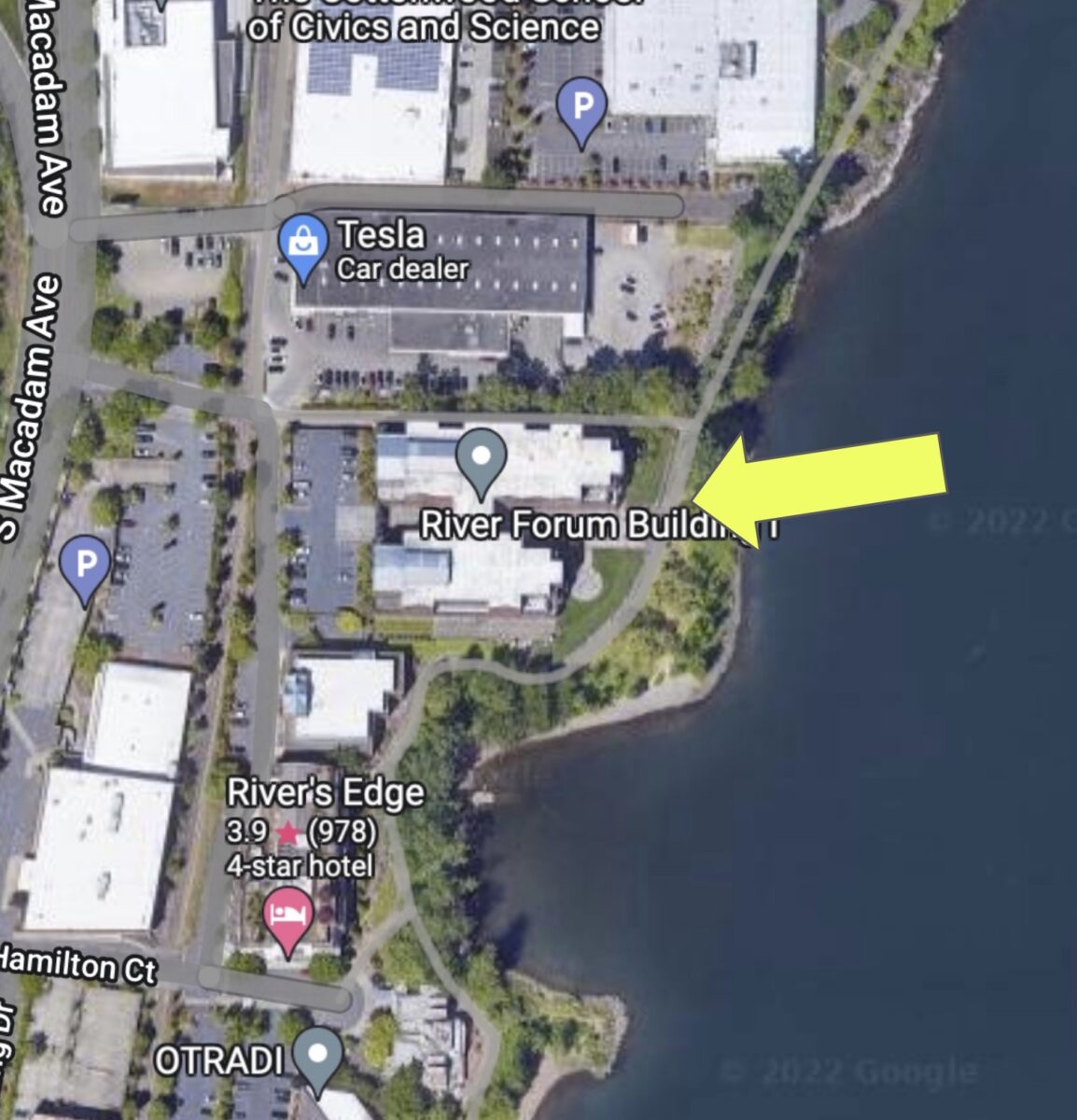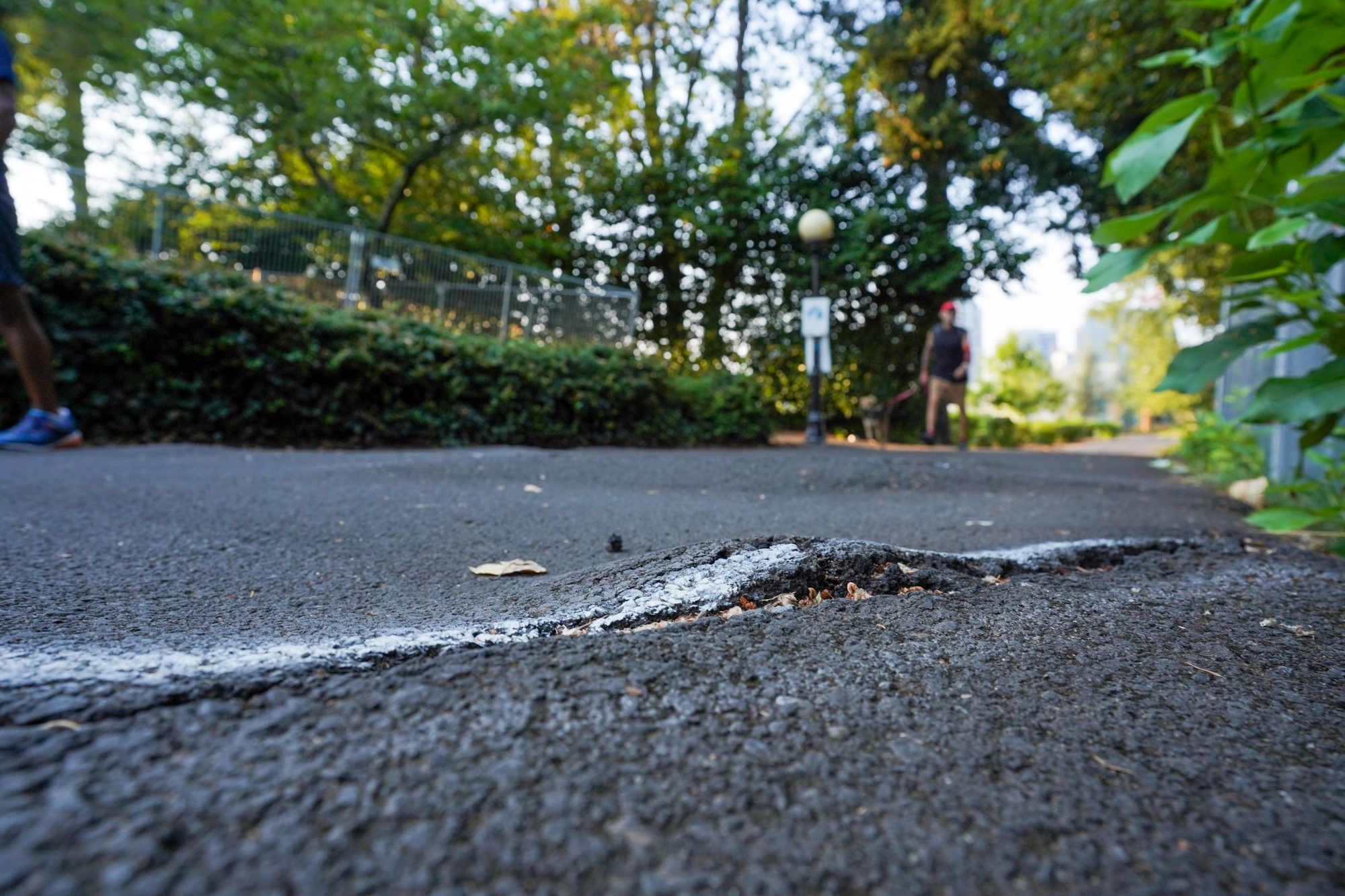
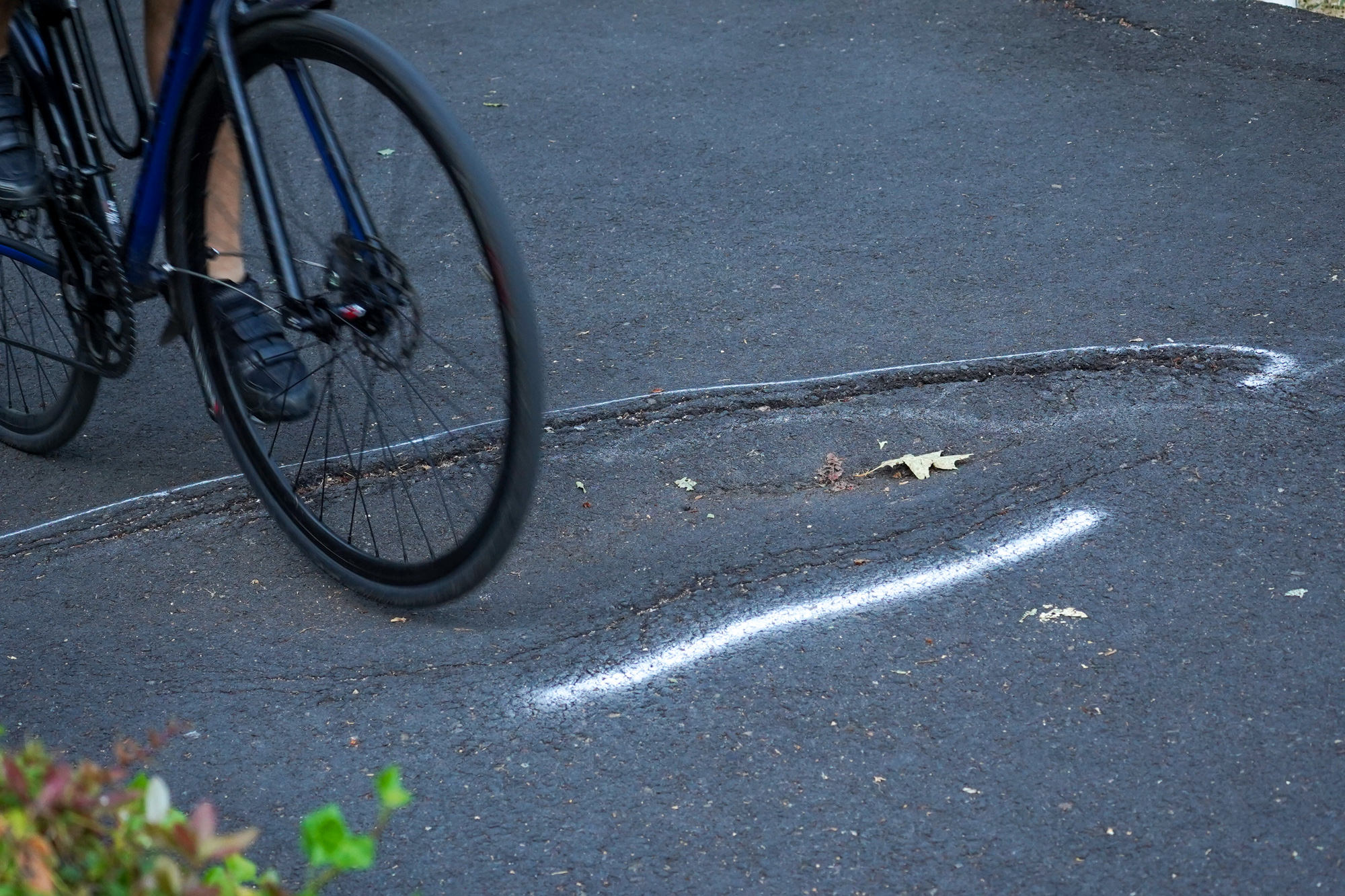
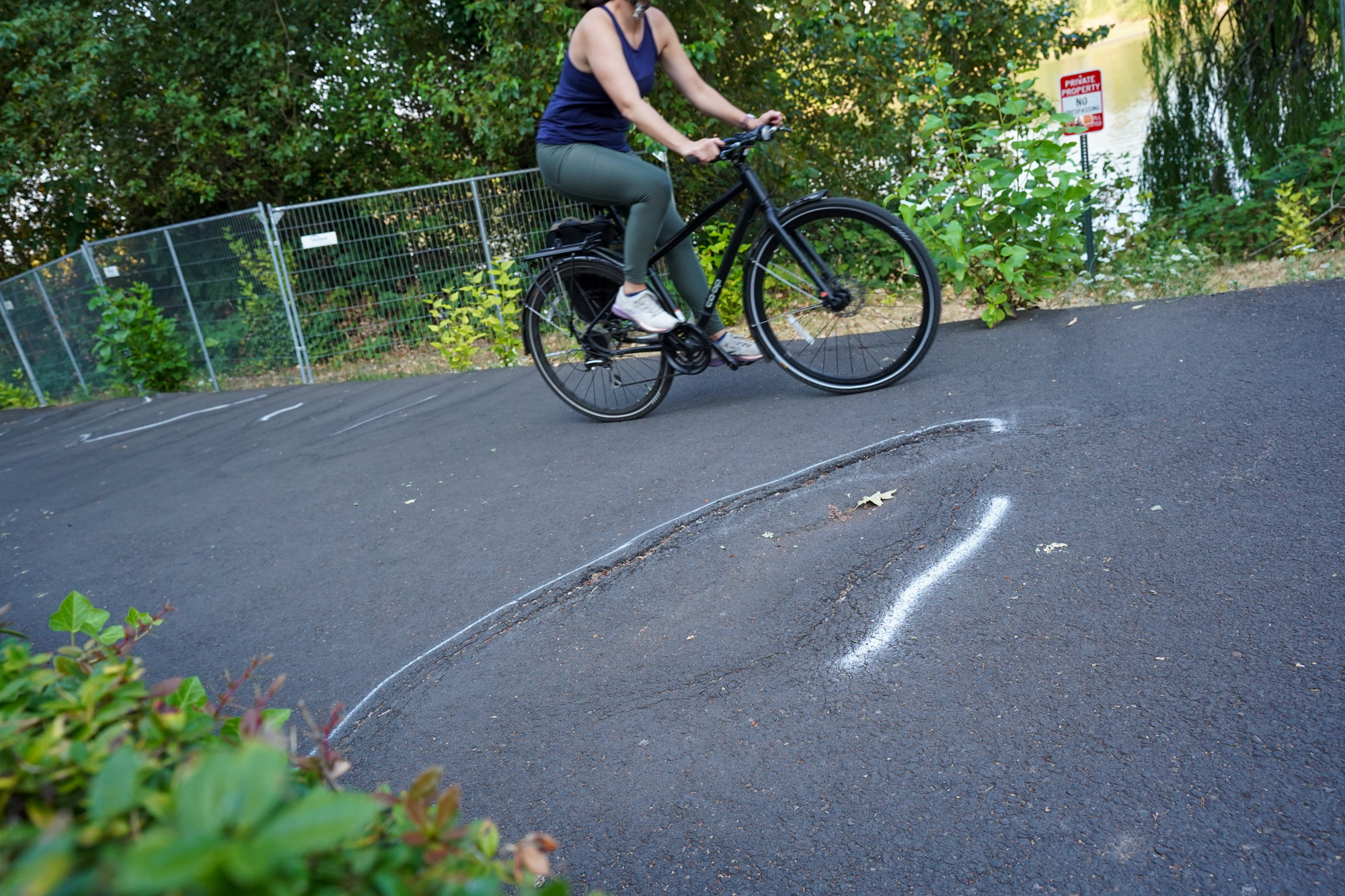
 Conditions on Willamette Greenway Trail path adjacent to River Forum Building. (Photos: Jonathan Maus/BikePortland)
Conditions on Willamette Greenway Trail path adjacent to River Forum Building. (Photos: Jonathan Maus/BikePortland)Who exactly has jurisdiction over a specific piece of bike path on the Willamette River? Downtown Portland resident Amy Caplan is learning the hard way that no one seems to know who’s in charge of this popular piece of public right-of-way.
On July 18th, Caplan was riding her bike northbound on the Willamette River Greenway just south of the Tesla dealership and north of Cottonwood Bay Park. She told me she recalls watching a group of bike riders coming toward her, “And then my bike literally flew up in the air and slammed into a lamppost.”
Caplan had run over a series of severe bumps and cracks in the pavement. She hit her head (“I saw stars after I fell,” she recalled) and got a few bruises on her shoulder, but luckily her bike and helmet took the brunt of the collision. Unfortunately, it wasn’t just any bike. Caplan, who moved to Portland in 2020 and uses her bike as a volunteer for Food Not Bombs, spent years searching for her dream bike: A 1999 mixte made by Georgena Terry (a legendary builder known for making bikes that fit women’s bodies).

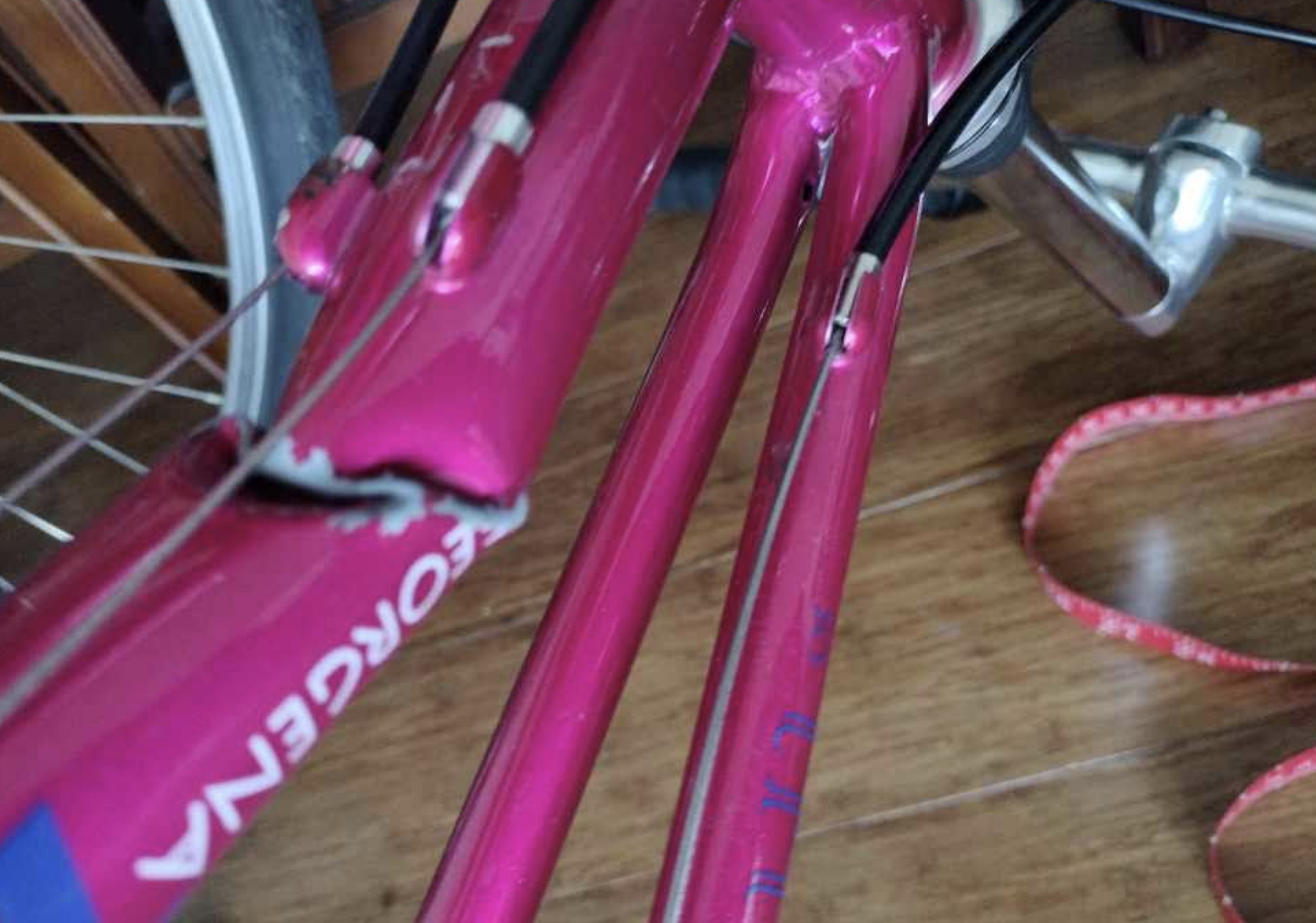
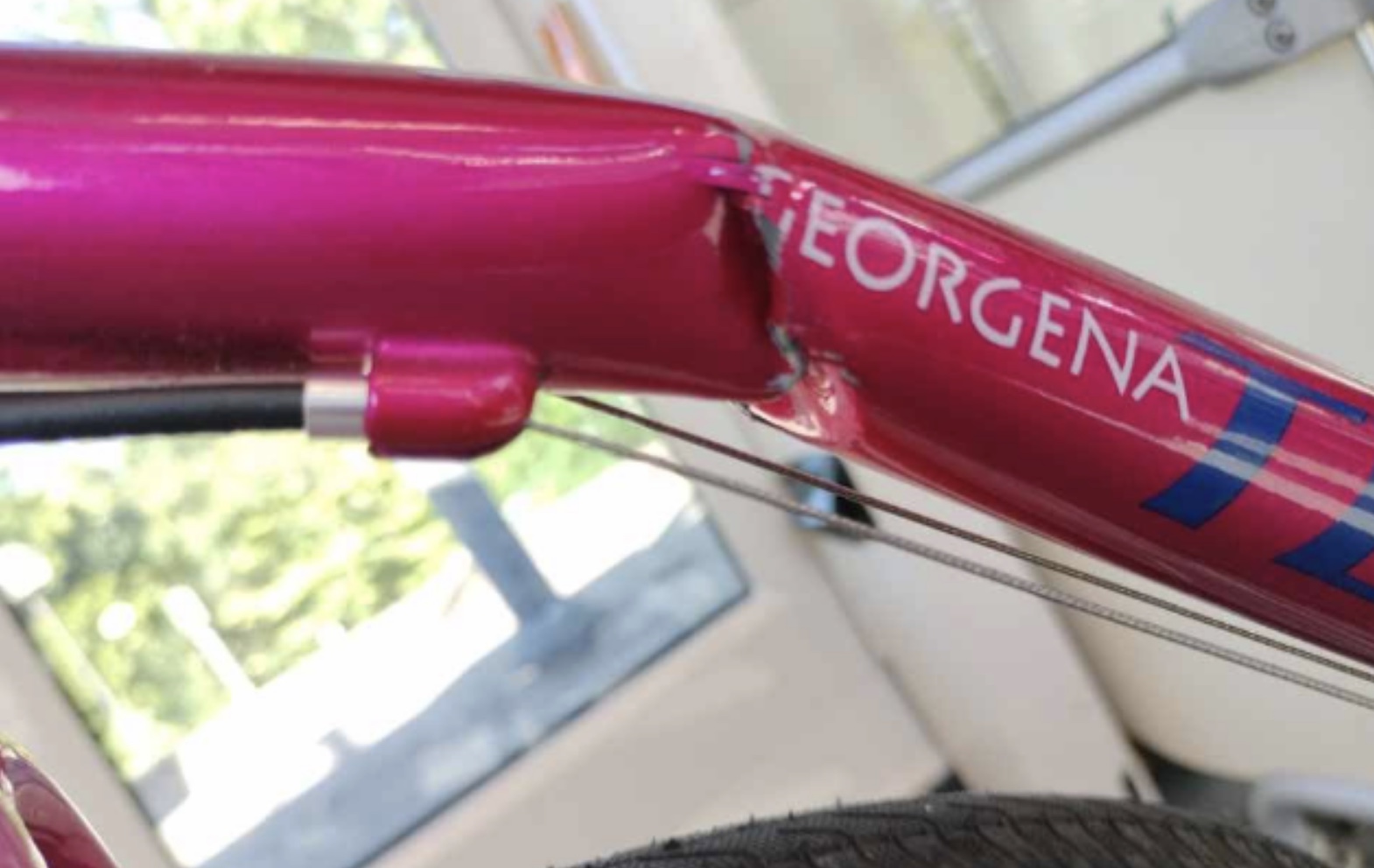 Caplan’s bike at work (left) and after the crash. (Photos: Amy Caplan)
Caplan’s bike at work (left) and after the crash. (Photos: Amy Caplan)
“Every agency was blaming a different agency or saying it was a responsibility of a different agency. I was really pissed. I was like, there are these hazards here and nobody’s responsible for them?”
The bike’s frame crumpled upon impact and is now damaged beyond repair. “I waited for this bike for 22 years and I had it two months and it was demolished,” Caplan shared with me last week.
The day after the crash, Caplan started researching the bumps. She called the city and told them what happened and she warned them more people would crash until the bumps get fixed. In addition to smoother pavement, she thinks a larger sign is needed. Currently, there’s only one warning sign (see below) that tells people about the bumps. It’s small and is only posted in one direction — not the direction Caplan was riding. “I just wanted ample warning for people so it didn’t happen anybody else.”
Caplan immediately got the runaround.
Since the path is a major bike route listed on city maps, she started with the Portland Bureau of Transportation. But they said the path was a Parks & Recreation responsibility. So Caplan called the Parks bureau. They told her it was private property and she’d have to contact the owner of the adjacent building.
“Every agency was blaming a different agency or saying it was a responsibility of a different agency. I was really pissed. I was like, there are these hazards here and nobody’s responsible for them?”
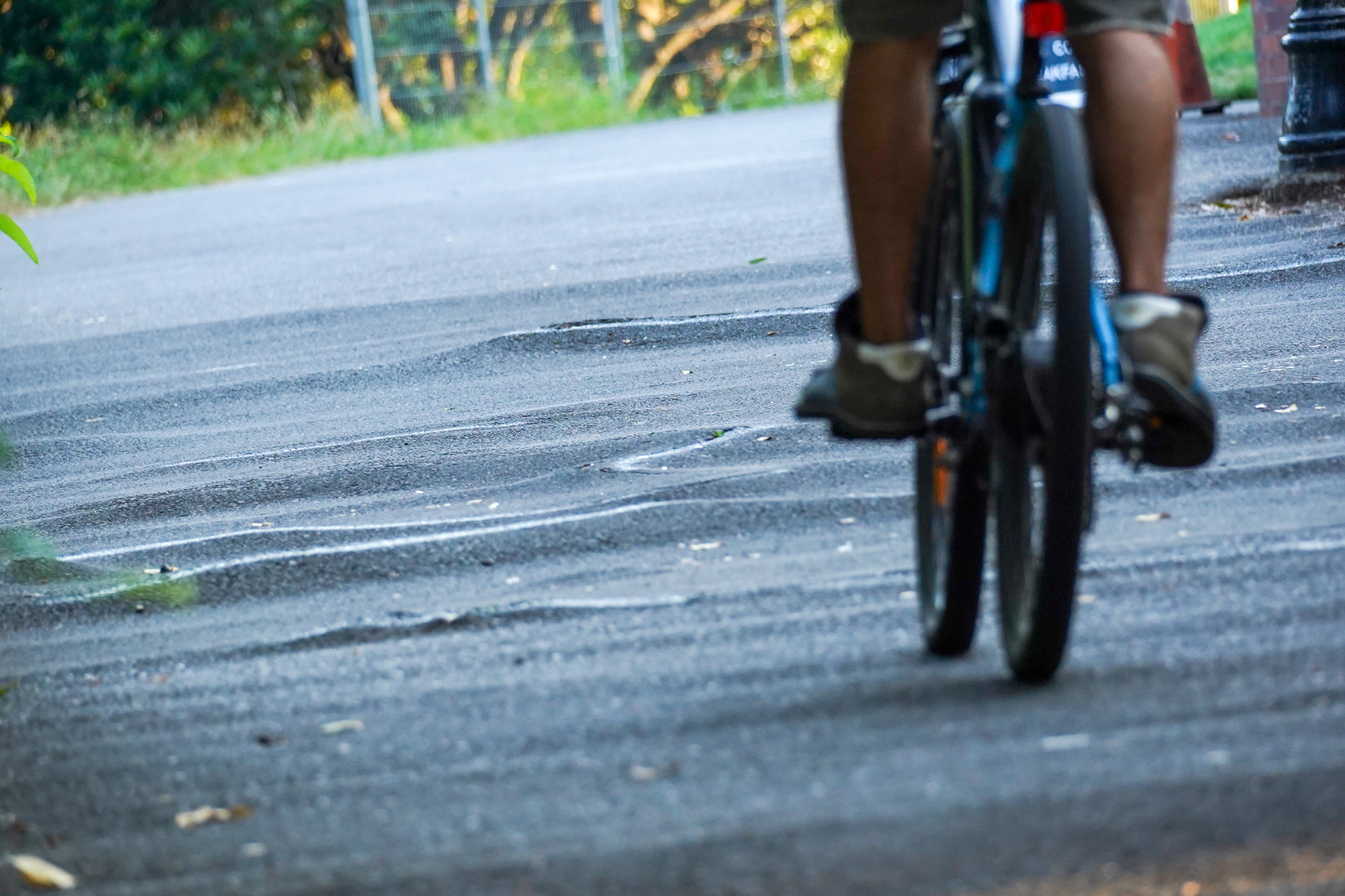
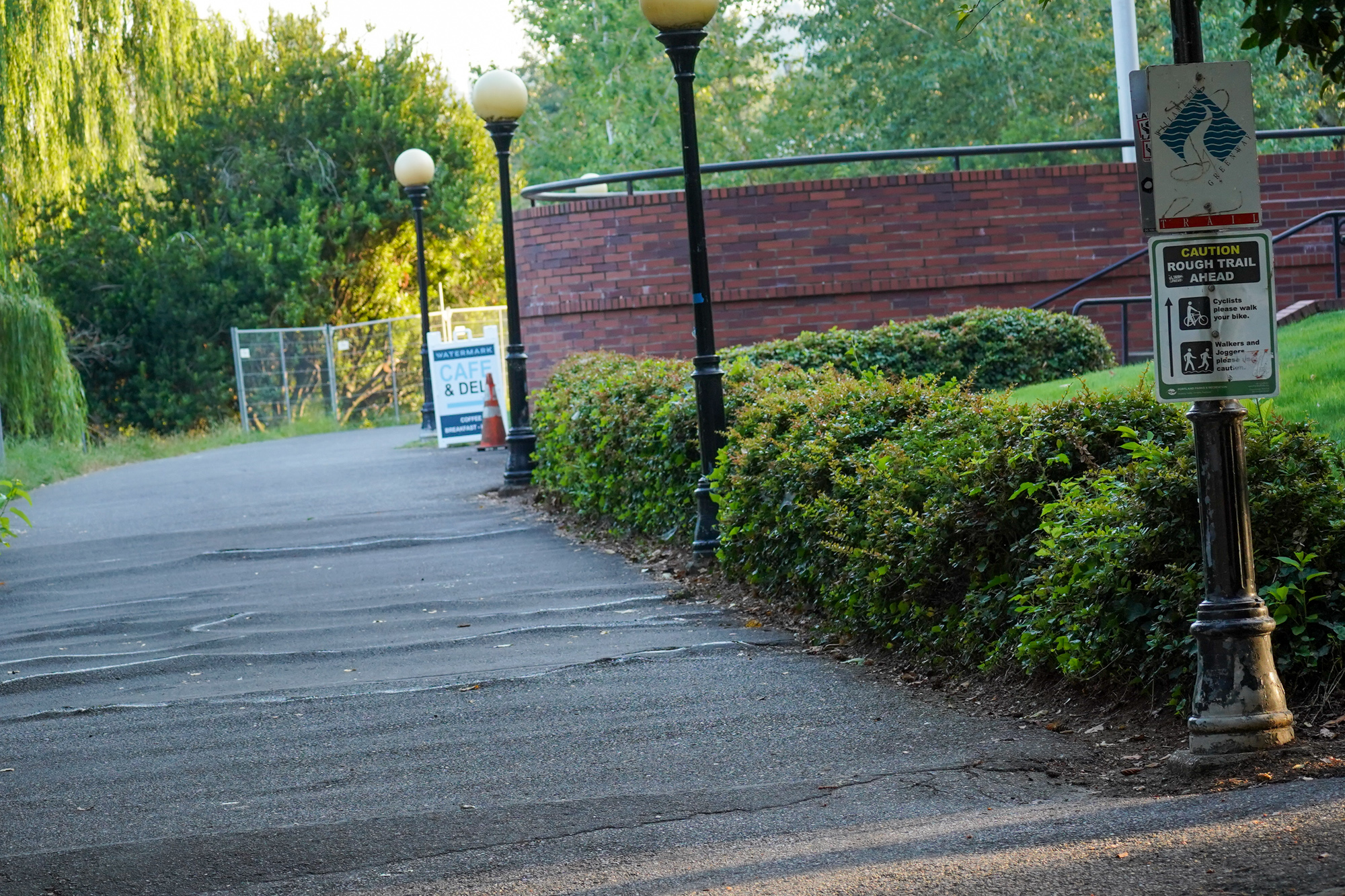
On July 26th Caplan filed a claim with the City of Portland Bureau of Revenue and Financial Services. About one month later, she got a response from Senior Claims Analyst Rosalia Radich. It was denied. In the response letter, Radich wrote:
“We regret to let you know that we are denying your claim. We understand that what you experienced was very difficult and we take claims such as yours very seriously. Every claim is investigated before finalizing our decision. According to our information, the area where the tree roots are located is not owned or maintained by the City of Portland but is, instead, maintained by the private property owner of the adjacent building.”
Radich gave Caplan the contact information of the building’s property manager, Hannah Knutson, who works for Jones Lang LaSalle (the building is owned by Vancouver, British Columbia-based Clarity Ventures). Caplan spoke to Knutson on the phone about replacing her bike and the initial conversation was very encouraging. Then Knutson ghosted her.
With so many dead-ends and the bumps still there, Caplan turned to BikePortland.
I’m familiar with this location because I’ve heard of others crashing here over the years. In 2018, a BikePortland subscriber even shared a post about it. “Can we do anything about the pavement breaks and bumps on the Willamette Greenway Trail?… It’s dangerous,” he wrote.
Chris Thomas, a lawyer with Thomas, Coon, Newton & Frost (a BikePortland advertiser) who specializes in bicycle law, was also aware of the location. “I know at least a couple of people who’ve been hurt there,” he told me in a phone call last week. He said he was “surprised” the City of Portland said it was a private property owner’s responsible. According to Thomas the jurisdiction question is important because a different set of laws applies if the responsible party is a public or private entity. Regardless, Thomas said, “I think it needs to be looked at careful. There shouldn’t be ambiguity. Confusion about who is responsible may be contributing to the bad conditions.”
It’s relatively common for the city to have a public right-of-way easement across private property. In fact, we’ve dealt with access issues several times over the years on this same path. In 2016, a condominium company near the Steel Bridge closed a gate on the path to keep people out and the city forced them to re-open it. And in 2015, business owners in Riverplace tried to prevent bike riders from using a section of the path.
Both Thomas and myself have pending inquiries with Portland Parks & Recreation about who exactly is responsible for the paths and the bumps that have hurt multiple people and have destroyed at least one beloved bicycle.
Even though the City of Portland Financial Services Bureau denied Caplan’s claim and said it was between her and the property owner, Parks makes it seem like it might not be so cut-and-dry. Thomas first contacted someone at Parks about it on September 1st. He and I have both yet to receive any clarity on the issue. Last week, Parks spokesperson Mark Ross shared via email that, “This will require some analysis of various property ownership and responsibilities/easements.”
We still haven’t heard back.
Meanwhile, Caplan remains frustrated and sad to have lost her dream bike, which she estimates would cost about $5,000 to replace with something custom that fits her as well. She feels like, even if jurisdiction is murky, something should be done sooner rather than later.
“If it’s a greenway, even if it’s private property, whoever establishes greenways should be paying attention to the condition of their greenways and enforcing safety measures along the way. I just don’t want anybody else to get hurt.”
![]()
Contact Jonathan at @jonathan_maus on Twitter, via email at This email address is being protected from spambots. You need JavaScript enabled to view it., or phone/text at 503-706-8804. Also, if you read and appreciate this site, please become a supporter.

